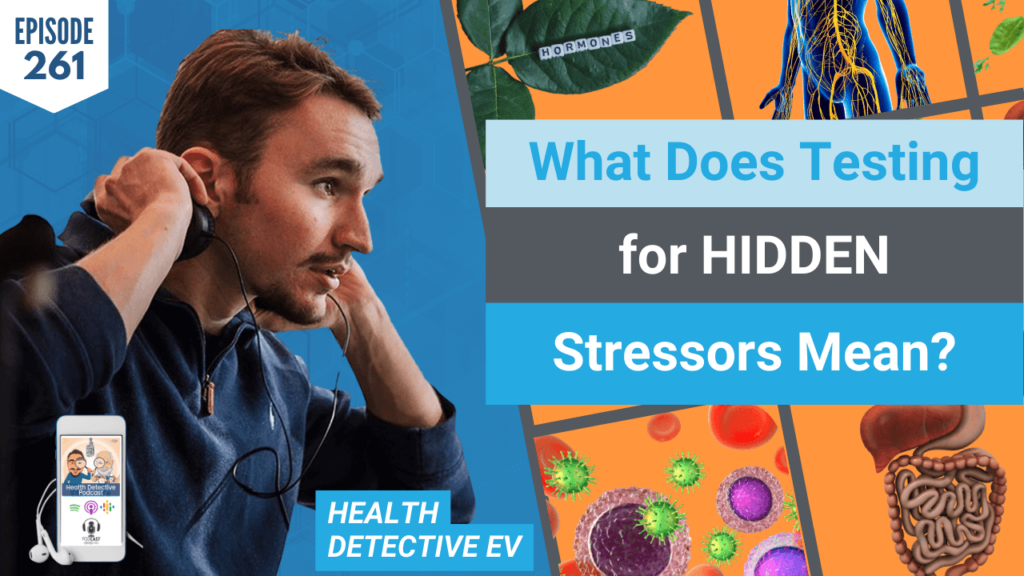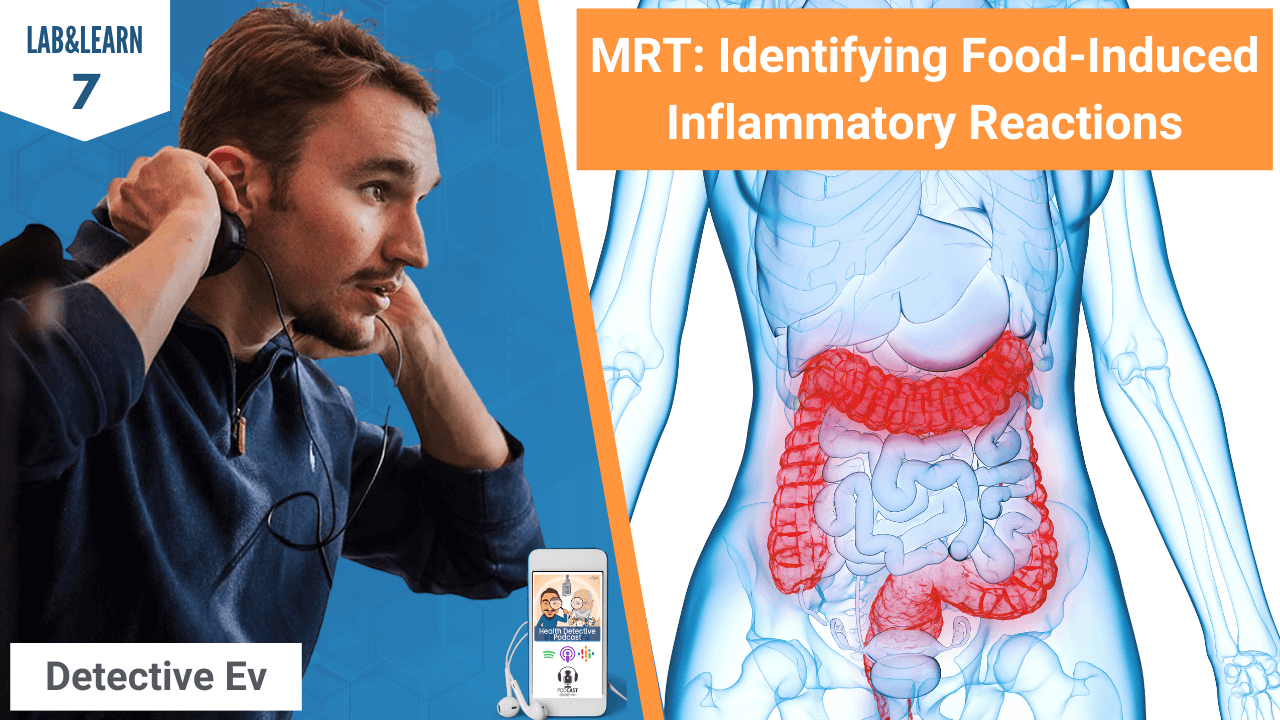Introduction
[00:00:00] Detective Ev: Well, hello my friends. Welcome back to another episode of the Health Detective Podcast by Functional Diagnostic Nutrition. My name is Evan Transue, aka, Detective Ev. I will be your host for today’s show on testing for HIDDEN stressors.
We are continuing our Intro to FDN series. And if you’re just hearing this for the first time, the reason that we’re doing it is due to some increased marketing efforts, we’ve had an insane number of new eyeballs and ears consuming our content at FDN. We figured it would be a good opportunity to break down what we do, why we do it, how we do it, just so that people can make an informed decision.
Because when people look at the course, obviously they’re thinking about going through the course, and we don’t want people making rushed decisions with things, or decisions on a whim. I mean, it’s a $9,000 program at the time of recording this. It’s only going to go up in the future as we add more content, and we believe it’s worth that to the right person.
In fact, we know it’s worth it to the right person because you can make significantly more going through this course because of how you’re able to help people. You can’t make the money unless you’re able to help the people. With that said, though, if this course isn’t for you, it’s not even worth $900, right? You see how that works? Because value is subjective.
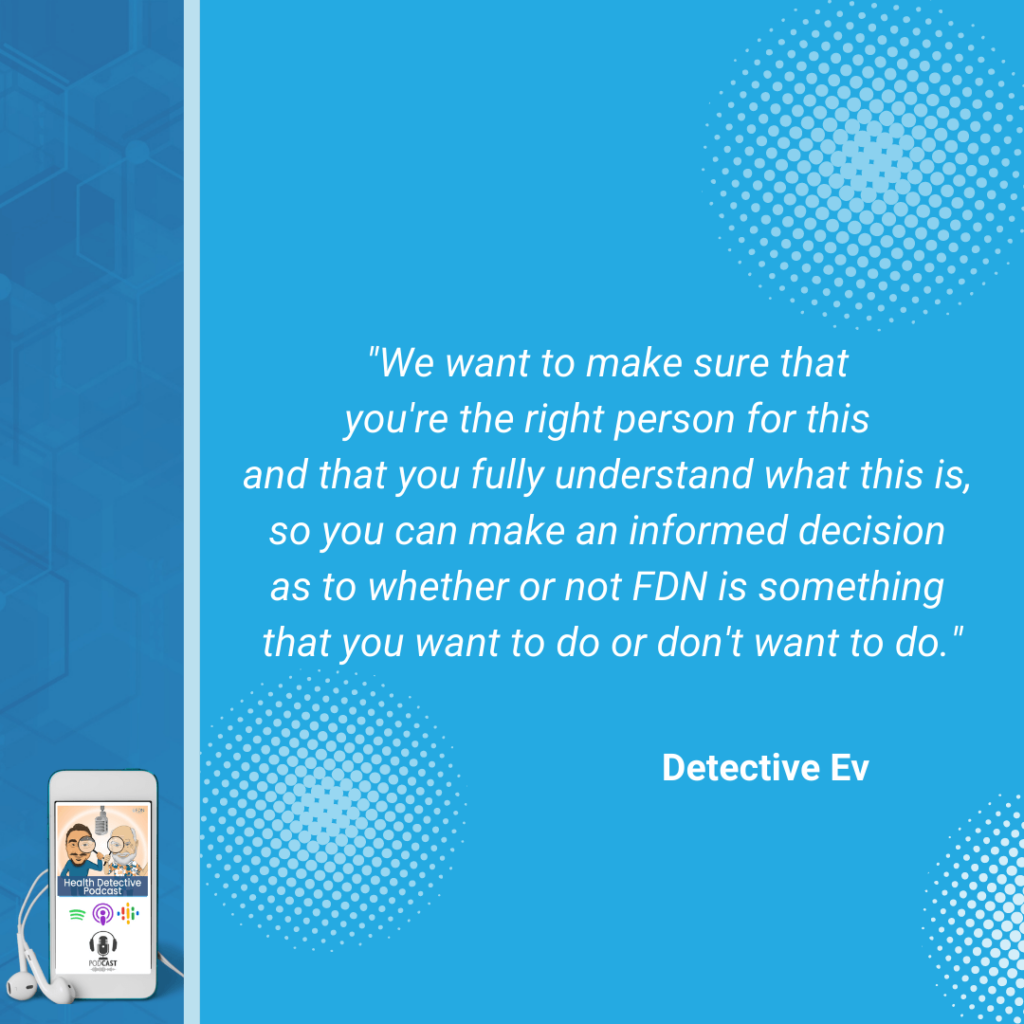
So, we want to make sure that you’re the right person for this and that you fully understand what this is, so you can make an informed decision as to whether or not FDN is something that you want to do or don’t want to do.
HIDDEN Stressors: It’s Time to Test
Now with that all said, if you haven’t listened to the other two episodes of the Intro to FDN series, please check it out. They’re both under 20 minutes. Click the link here to view Metabolic Chaos. Click the link here to view DRESS. So, go check those out.
What we’re talking about today is HIDDEN stressors, and this will make more sense if you’ve heard the other two episodes. Remember what we talked about already. We talked about metabolic chaos. It is the only unofficial diagnosis we give out at FDN. And to properly address metabolic chaos, you need to use DRESS and you need to test for HIDDEN stressors.
So DRESS was our lifestyle protocol. That’s diet, rest, exercise, stress reduction and supplementation. We made the case last time that perhaps if everyone was doing DRESS correctly from day one of them being born, maybe we would never even need to test for HIDDEN stressors. I don’t think that would work perfectly, but I think it would be good enough that significantly less people would need the testing than often do.
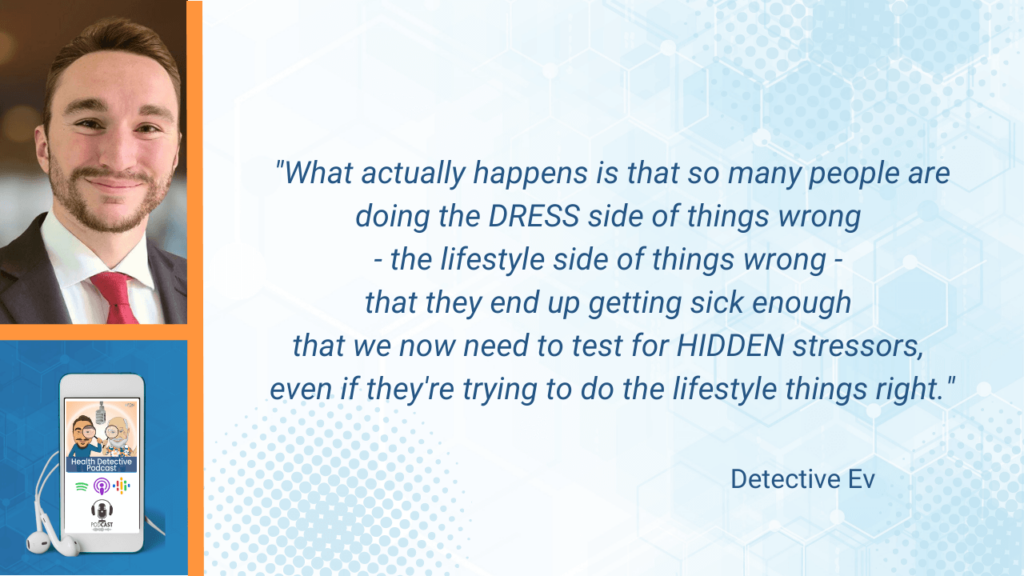
What actually happens is that so many people are doing the DRESS side of things wrong – the lifestyle side of things wrong – that they end up getting sick enough that we now need to test for HIDDEN stressors, even if they’re trying to do the lifestyle things right. That’s why FDN incorporates both. Because if you don’t address the lifestyle things with your clients, you’re going to have what we call a revolving door practice. A revolving door practice means that you just keep coming back through, and then you leave and you come back through, and you leave and you come back through.
HIDDEN Stressors: We’re Not a Revolving Door Practice
We don’t want to do that here. That’s not how we do business at FDN. What we want to do is serve our clients at a high enough level that they don’t need to keep running through the revolving door. They’re not just a hamster on a wheel where it just continues over and over and over again.
What we want to do is have them come in one time. Now, obviously, they’re going to work with you for more than one session, you know what I mean? But work with you for one program that was suited for them. And then how you’re getting business after that is your normal marketing efforts, but also from referrals from these people that are sharing their stories with others or just are walking billboards.
Because some of these people, including myself, look so different in such a positive way after doing an FDN program that people will be asking them, what did you do? How did this happen? So, they’re walking billboards for what you did. That’s a good way to run a business. Separate conversation, but that’s a good way to run a business, right?
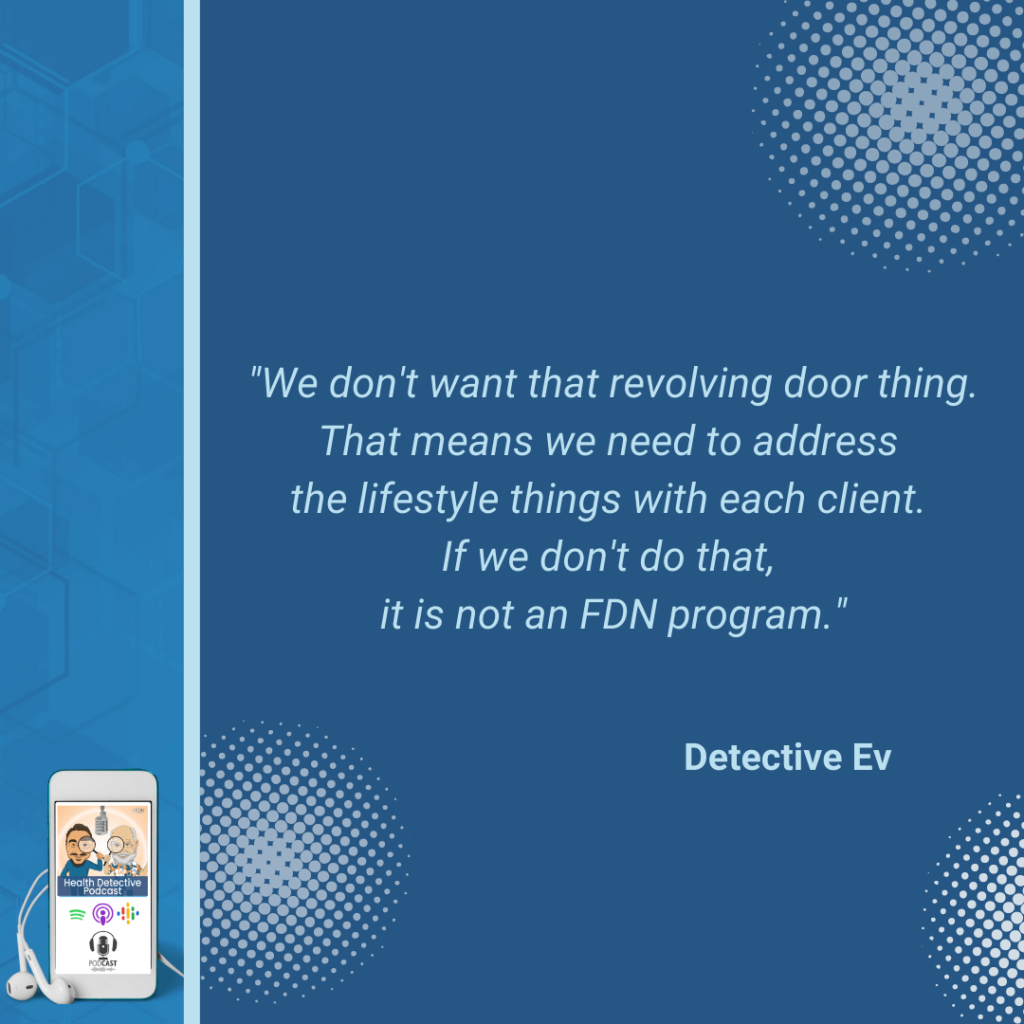
We don’t want that revolving door thing. That means we need to address the lifestyle things with each client. If we don’t do that, it is not an FDN program. Because now you can test for this stuff. You can help them through protocols to address the things that were on the tests. And if they’re doing the lifestyle stuff right now, they’re probably not going to get sick again. They’re going to feel pretty darn good.
HIDDEN Stressors: The Things We’re Testing For
And yes, there are ebbs and flows of life; there are things that come up. But they’re going to know what to do a thousand times better than they knew how to do it before. I have had ebbs and flows in my life. I’ve had things that have come up ever since I became an FDN.
Yes, things aren’t just perfect afterwards. But I knew what to do, it wasn’t a major problem. There have been zero major problems in my health ever since I graduated from FDN and knew this program. It’s amazing. We need to do both of those things.
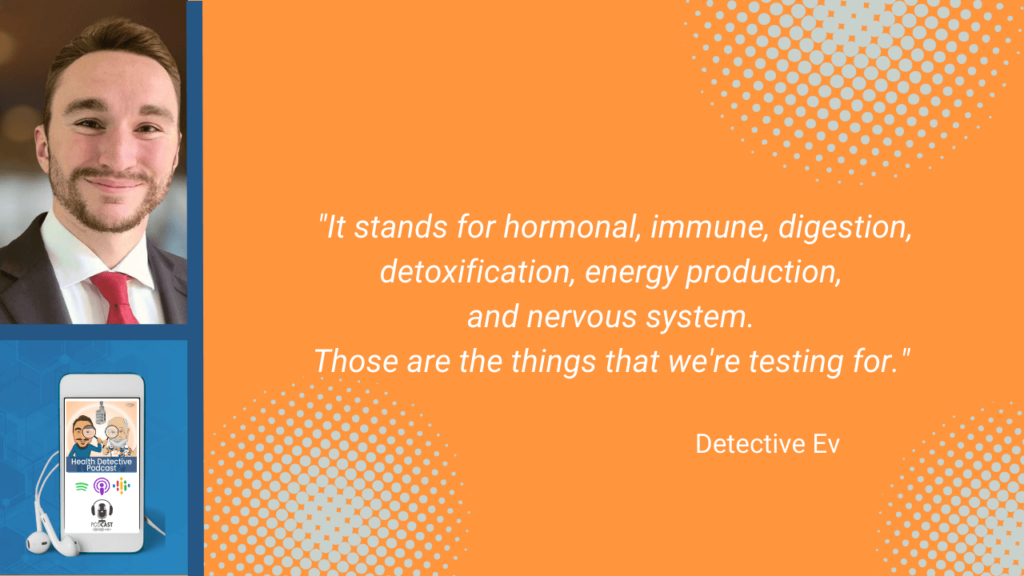
So, what are the HIDDEN stressors? Well, just like DRESS was an acronym, HIDDEN is obviously an acronym. It stands for hormonal, immune, digestion, detoxification, energy production, and nervous system. Those are the things that we’re testing for. You can also add oxidative stress to that mix, but it’s not as good of an acronym to say HIDDEN-O or O-HIDDEN as it is to say HIDDEN, right? So, you can add oxidative stress to that mix perhaps, but HIDDEN stressors are the way that you can think about this.
This is a really interesting conversation in the functional medicine space. And this might be a brand-new space to you, so it might be too far advanced. But some of you have probably been exposed to functional testing or functional medicine before. You’ll find that there’s quite a bit of dogma around certain tests, or there are practitioners who are really in love with one or two tests.
HIDDEN Stressors: Chronically Ill Even After Many Dr. Visits
Hey, I’m a nerd too. I have my favorite things, I have my biases, I totally get that. But at FDN, we don’t do that kind of stuff. We’re not in love with a particular test per se or dogmatic to any particular test. What we are doing is following a system, and the system is the testing of HIDDEN stressors.
Well, how did HIDDEN come to be? It came from the founder, Reed Davis. Reed is always transparent about how he got into this. He had a variety of different careers prior to becoming a nutritionist, basically, and I don’t mean in the legal way. Nutritionists have a lot more restrictions around the term now. But when Reed had started doing this over two decades ago, there were no restrictions around the term.
In certain American states, you can still get away with it, but definitely back then it was less stringent. It’d be like saying “health coach” now at the time of recording this. Anyone can say they’re a health coach. You can go out tomorrow and put that in your Instagram bio, there’s no legality behind that. Right?
So, he was a nutritionist, had decided to become one, was working in a chiropractor’s office, wanted to help people with that kind of stuff. And he started to notice something interesting. What he noticed is that the people that were coming in the office, not all of them, but oftentimes, were very sick.
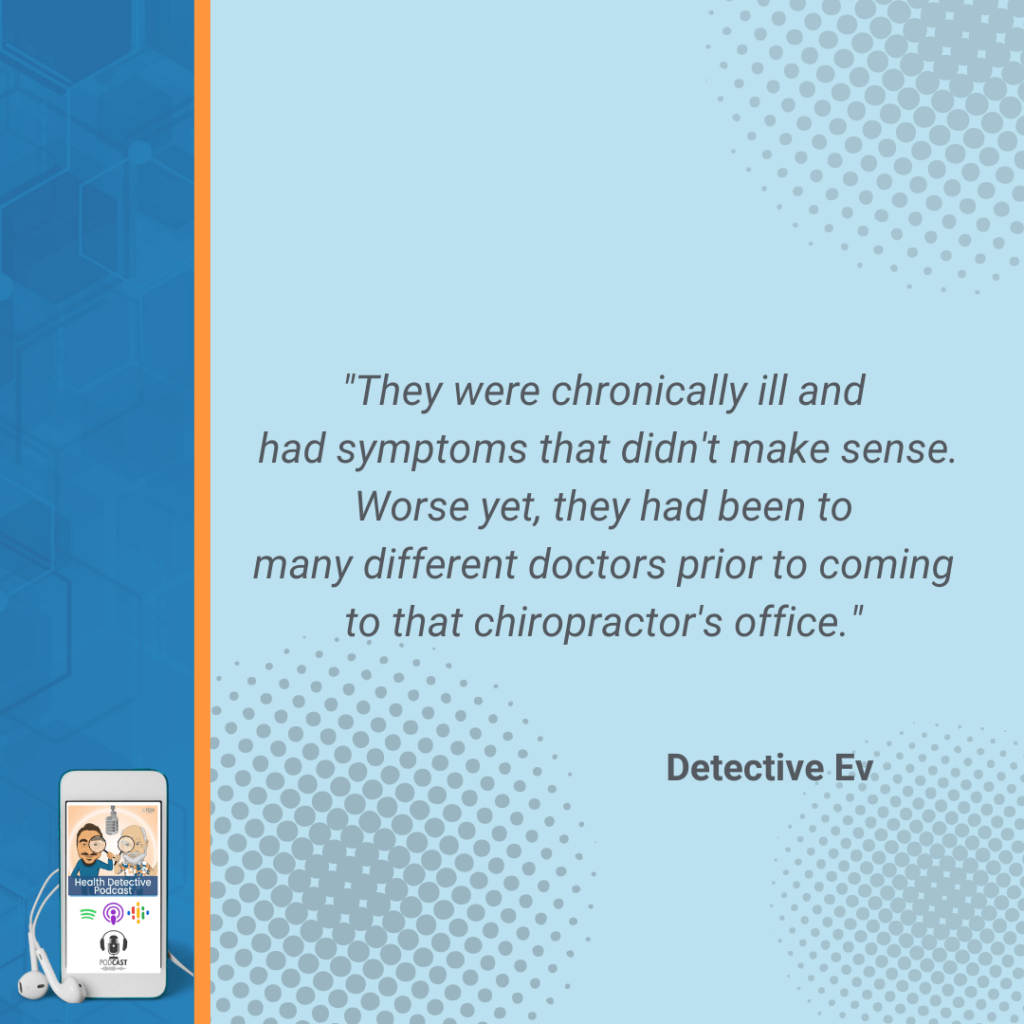
They were chronically ill and had symptoms that didn’t make sense. Worse yet, they had been to many different doctors prior to coming to that chiropractor’s office. They had tried a bunch of things, had spent tens of thousands of dollars sometimes. Does that sound familiar to anyone that you know?
HIDDEN Stressors: The Last Person in the Lineup
Maybe that’s even yourself. If that is yourself, welcome home. I mean, you’re par for the course at FDN.
It was hilarious. Sorry, side note, I gotta say this. I was talking to a woman the other day. Brilliant woman, you know, engineer, did a lot of different things, very impressive in her career. I’ll just put it that way. She was new to hearing about us. And she was talking about how she wasn’t sure a hundred percent that she related to everyone here.
Her whole story was about how she had this standard career, standard in terms of nothing to do with health. And she has this health journey, health symptoms, and then realizes she wants to go do this as work once she got better and healed from this. I’m like, my friend, that is exactly who comes to FDN. That makes perfect sense. Right? I digress.
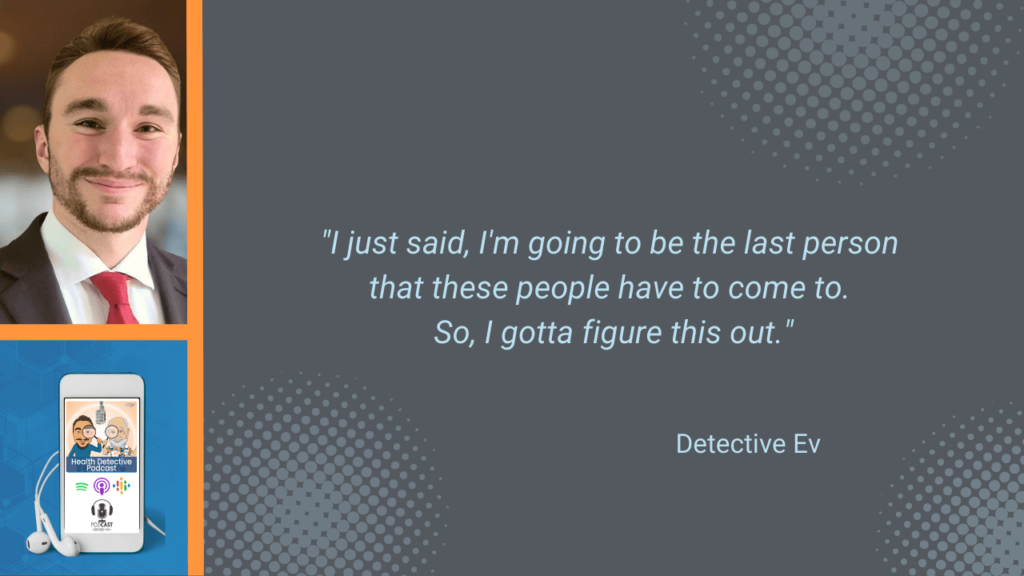
Reed noticed these people already back then having issues like this and coming into the office. And he makes this joke. He said, maybe it was arrogant at the time, but I don’t know why I believed this. I just said, I’m going to be the last person that these people have to come to. So, I gotta figure this out.
And he didn’t even deal with chronic health issues, which is very rare for our space. Most people that are in this space kind of have dealt with this stuff to some degree, or at least seen it. He was just like, I don’t want people to have to deal with this. And so, it started off with basic testing.
HIDDEN Stressors: Testing to See What Would Work
Where I say he was fully transparent is that he didn’t really know what he was doing in the beginning; he says this. He’s like, I was just trying to see what would work and what would be helpful.
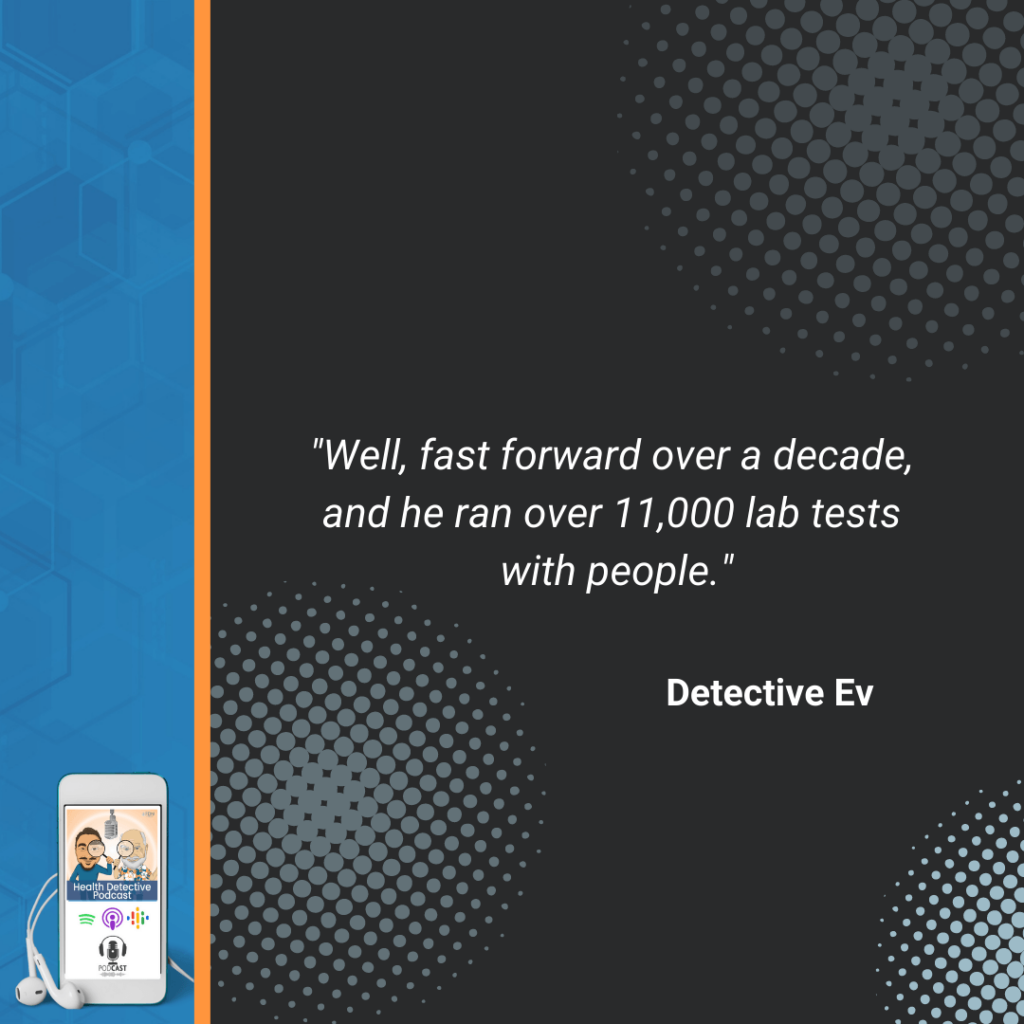
Well, fast forward over a decade, and he ran over 11,000 lab tests with people. He was running so many labs at one point that a lab actually called him and asked, what are you doing? You need to teach people how to do this. Lo and behold, that’s how FDN came to be.
What he figured out was that no lab tests is kind of silly. The reason that it’s kind of silly to do that when we’re talking about someone who’s chronically ill, is because that’s one of the advances of the modern world. We do have these testing methods. We have ways to figure out what’s going wrong in the person. Why not use it, why not get some insight into what’s going on?
And that might seem pretty intuitive. It’s like, okay, well that makes sense. I already understand what the benefit of testing would be, that’s fine. But you also have to go to the opposite end of this as well. If someone had all of the money in the world, I mean, unlimited, it did not matter how much they spent. They could spend out however much they wanted on these lab tests. It still wouldn’t be smart to run every lab that’s out there.
And that one might be a little more controversial or counterintuitive. You’re thinking, well, if someone had all the money in the world, why wouldn’t you want to run every test?
HIDDEN Stressors: The Happy Medium
There’s kind of a diminishing returns phenomenon here. The problem is when you get, I guess that would be hundreds if not thousands of lab tests back, what do you actually do? Are you going to take different actions based on all of those things? I mean, if each test only had one actionable step, you’d have thousands of actions for the person to do. So, is that actually helpful?
One. No, it’s not. That’s actually overwhelming and probably impossible. But number two, what I just said isn’t even realistic, right? No one really has all the money in the world except a very select few people. So, it’s not even a realistic example. But even hypothetically, it’s still a bad idea.
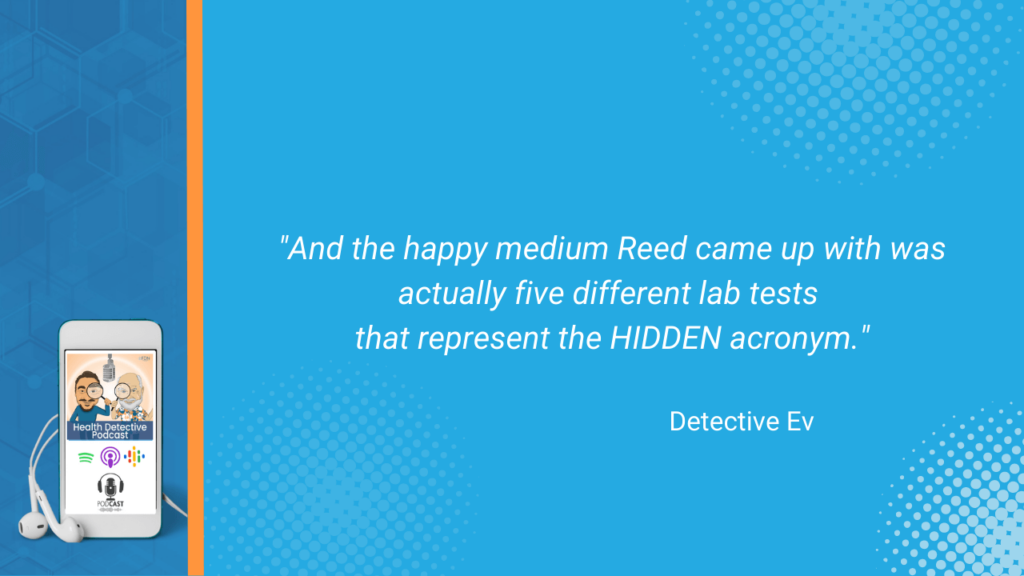
So, somewhere between all the labs in the world, if you had all the money in the world, and zero labs, there is a happy medium. And the happy medium Reed came up with was actually five different lab tests that represent the HIDDEN acronym. When you run these things on chronically ill people, what you will find, and I’ve found this in my own practice and certainly found it with myself, is there’s a bunch of stuff wrong.
But what’s fascinating is half the time Western Medicine doesn’t even think about these things, let alone test for them. Case in point is the fact that 2021, by the time I came through the FDN course, I had already gone to the doctor. The testing that I got was nothing that I got at FDN. I got a few different diagnoses. It was actually seven by the age of 18. I had a lot going on and no one investigated further.
HIDDEN Stressors: Testing and Finding a Mess
It was just basically, hey, this is what’s up. You got this diagnosis; we’re not going to do anything more. Blood work wasn’t really remarkable; here you go.
Well, when I go through the FDN system, I tested for HIDDEN stressors. The first was hormonal. I was a mess hormonally. I was in something that we call the exhaustive phase of HPA axis dysfunction. It’s the final phase of HPA axis dysfunction, it doesn’t get much worse than that. And I was already in that as a 21-year-old male at the time.
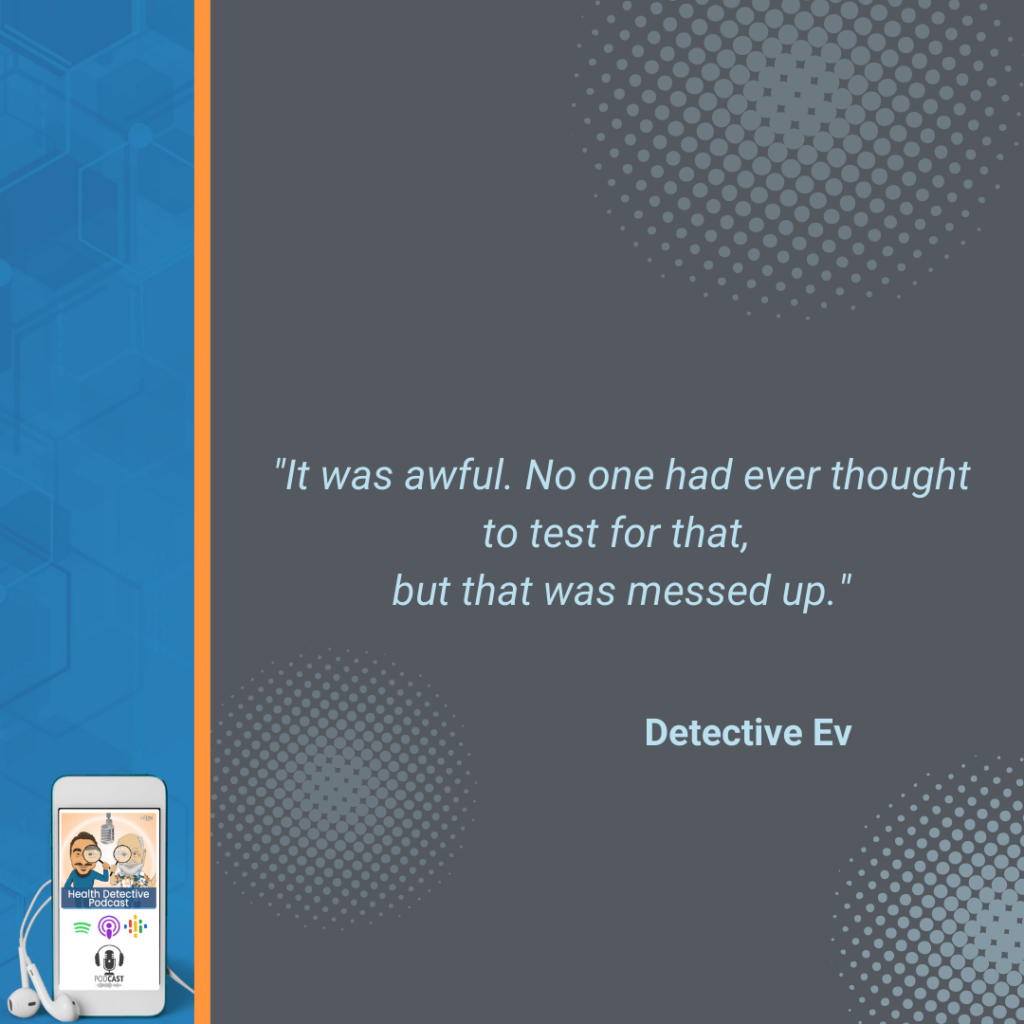
My progesterone, which is a primarily female sex hormone, was 4.5x’s higher than the highest end of the reference range for a male. My testosterone was actually fairly normal with nothing to brag about, that’s for sure. My DHEA, which is an androgenic hormone, was 2.8 to 4 times higher than what it was supposed to be. Cortisol was tanked – that’s a characteristic of the HPA axis dysfunction being in the exhaustive phase. It was awful. No one had ever thought to test for that, but that was messed up.
Then there’s various things that we can do for immune function, but one of the things at the time was secretory IgA via stool. It was super low. And secretory IgA just doesn’t go low overnight. First it goes high when it’s chronically stressed. Not that the literal chemical is chronically stressed, but I mean, when chronic stressors are happening that trigger the release of secretory IgA, it always goes high before it goes low. And it can stay high for a very long time. So, when you’re testing for someone that you see it’s low, that is very indicative that this is a series of issues that has been going on for quite some time.
HIDDEN Stressors: What FDN is Able to Do
I mean, I could have told you that my immune system was shot too. We’re looking at markers for detoxification. That was crap. My digestion was crap. No one ever tested for that. Energy production, that ties in with a few different ones of our tests. That was not good. I didn’t feel that great. I, again, could’ve told you that cause I didn’t have any energy production. And my nervous system was whacked out too.
So, when we tested for the HIDDEN stressors, there were so many actionable steps and insights that came from those tests. Not one person in Western medicine ever thought to test for that. Not one doctor that I went to ever said or thought to test for any of that stuff. In fact, I was told sometimes, again, on my blood work and stuff, that the labs looked fairly normal. There were no actionable things to do there. But yet on these tests, I had a bunch of things to do.
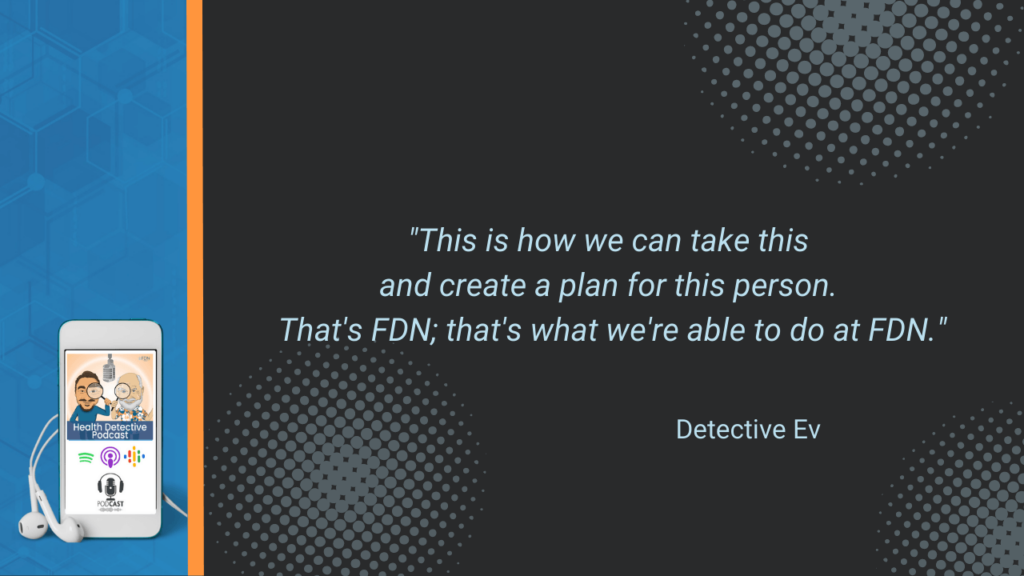
And it’s one thing to run a test and find something wrong and say, hey, look, Mr. and Mr. So and So, this is wrong. That’s great and all but what do you do? Well, that’s what Reed became an expert in. After running 11,000 labs, he realized this is what we can do with this information. This is how we can take this and create a plan for this person. That’s FDN; that’s what we’re able to do at FDN.
HIDDEN Stressors: The FDN System
We can address the stuff that came up hormonally, the stuff in your immune system, in the digestion, in the detoxification, energy production, nervous system. Yes, we can address all of that. And some of it is protocol oriented. That means we can use supplements or certain therapies to help temporarily, but that’s not the end all, be all at FDN.
Remember what DRESS stands for? Diet, rest, exercise, stress reduction, supplementation. Supplementation is last for a reason, not just because it’s the final “S” in DRESS. It’s actually last in that acronym for a reason. It’s the least important thing – it’s supplemental. So, some of the stuff that comes up from the test results will be protocol oriented, but a lot of it’s based off the lifestyle thing.
But Ev, isn’t DRESS the lifestyle thing? Yes. And when we test for the HIDDEN stressors and we figure out what’s going on in your unique body, that’s when we can customize the DRESS protocol – the lifestyle recommendations for you. When lifestyle recommendations go from generic, which are useful, to customized, that’s how you get rapid healing.
That’s how you get the stories that we have on this podcast where you are talking to people who had autoimmune conditions for 20 years sometimes and are now in quote/unquote “remission”. No one will ever say it’s cured, so it’s in remission. I got some stuff in remission too. It’s a heck of a long remission. I must be doing pretty well. Crazy how that works, huh?
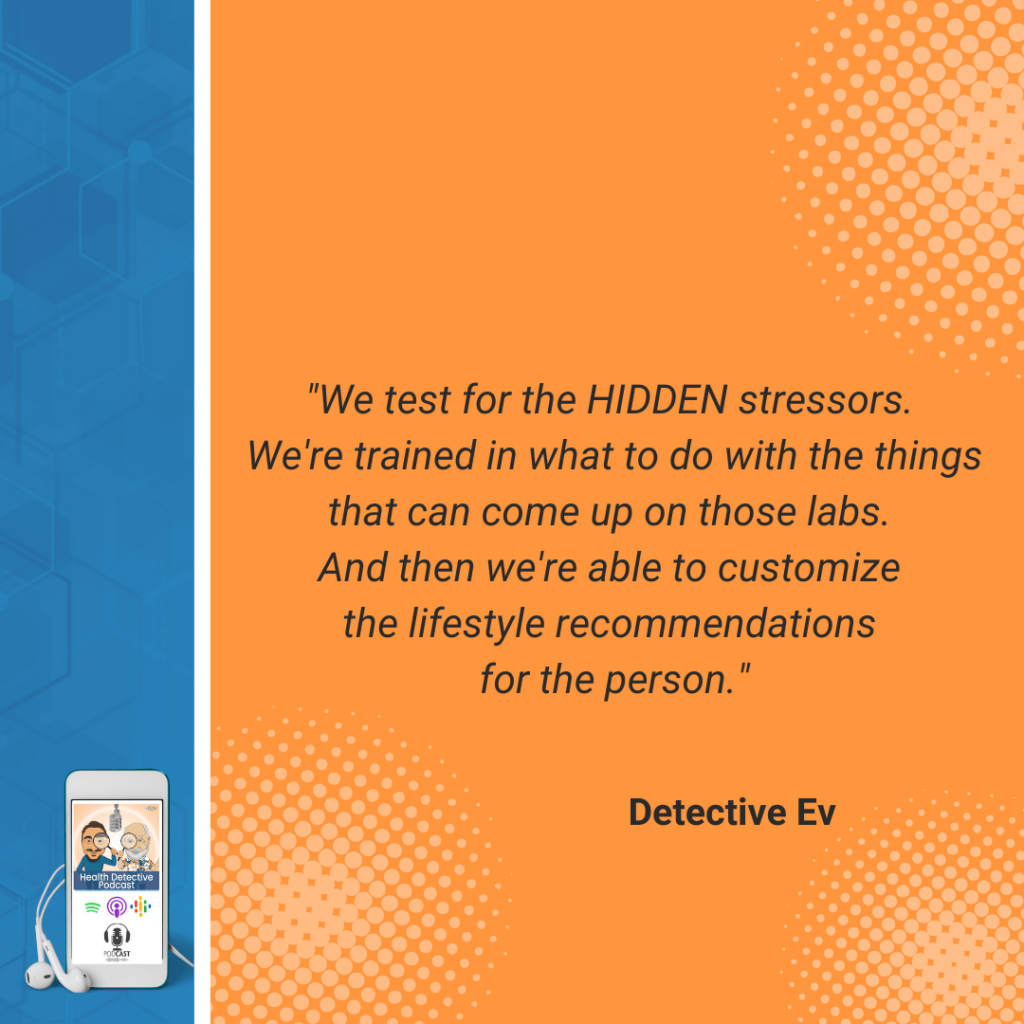
So, we test for the HIDDEN stressors. We’re trained in what to do with the things that can come up on those labs. And then we’re able to customize the lifestyle recommendations for the person.
HIDDEN Stressors: How Far Can We Take It?
That’s how we can get people better, significantly quicker than if they ever did DRESS stuff on their own, if they ever were able to get better on their own doing DRESS stuff. They’ll always get somewhat better. They might get 70%, 80% better, but without the testing, they might get a little stuck.
And you might say, well, Ev, this can’t be the most perfect system ever, right? Certainly, there’s gotta be room for improvement. There are margins of error. Like if it was a hundred percent success a hundred percent of the time, wouldn’t everyone and their brother know about this? The answer’s absolutely yes. They would know about this. And it’s not that it’s not good, but a hundred percent is pretty dang hard. But we’ve already accounted for that at FDN.
So, I don’t want to get too loaded in this conversation. This is supposed to be an intro to FDN. But to the astute listener, you might be starting to think like what I just said and realizing, okay, what if I need more? What if they do get 80% better and I need that last 20%? That’s what’s so crazy about FDN, we know that that will occasionally come up.
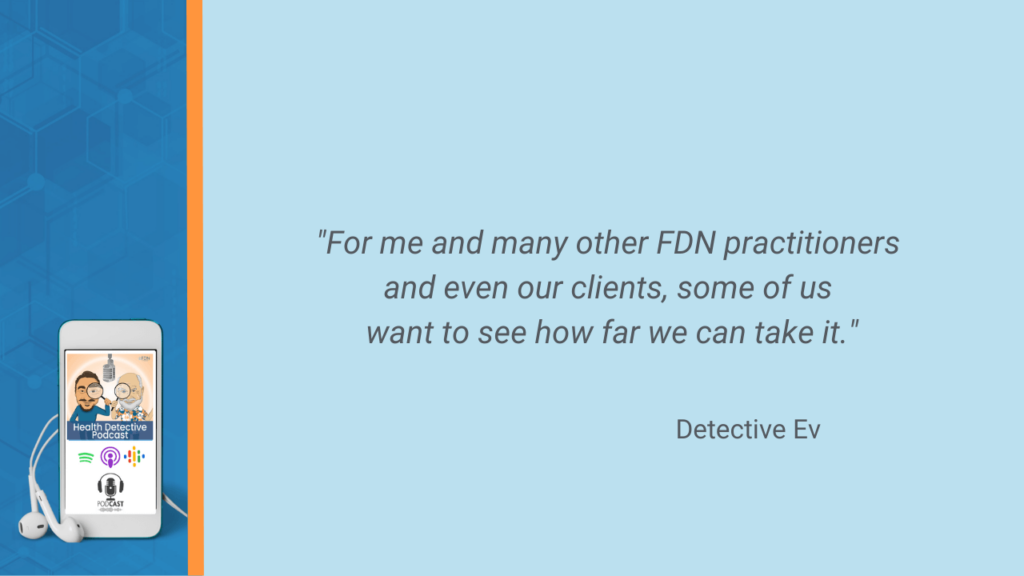
Now, grant you, your client’s going to be pretty dang happy if you get them to 80% better, right? You’d be surprised by how many people will actually not have a desire to do anything more after getting 80% better because, relatively speaking, they feel so dang good that they just don’t care anymore. For me and many other FDN practitioners and even our clients, some of us want to see how far we can take it.
HIDDEN Stressors: Unlimited FDN Support
And I don’t mean that in a bad or obsessive way, it’s not a bad thing. It’s almost like, if I could do this, there’s no way I couldn’t go a little farther, right? Like, you just don’t believe that 80% is your cap. So, you know it can get better given enough time.
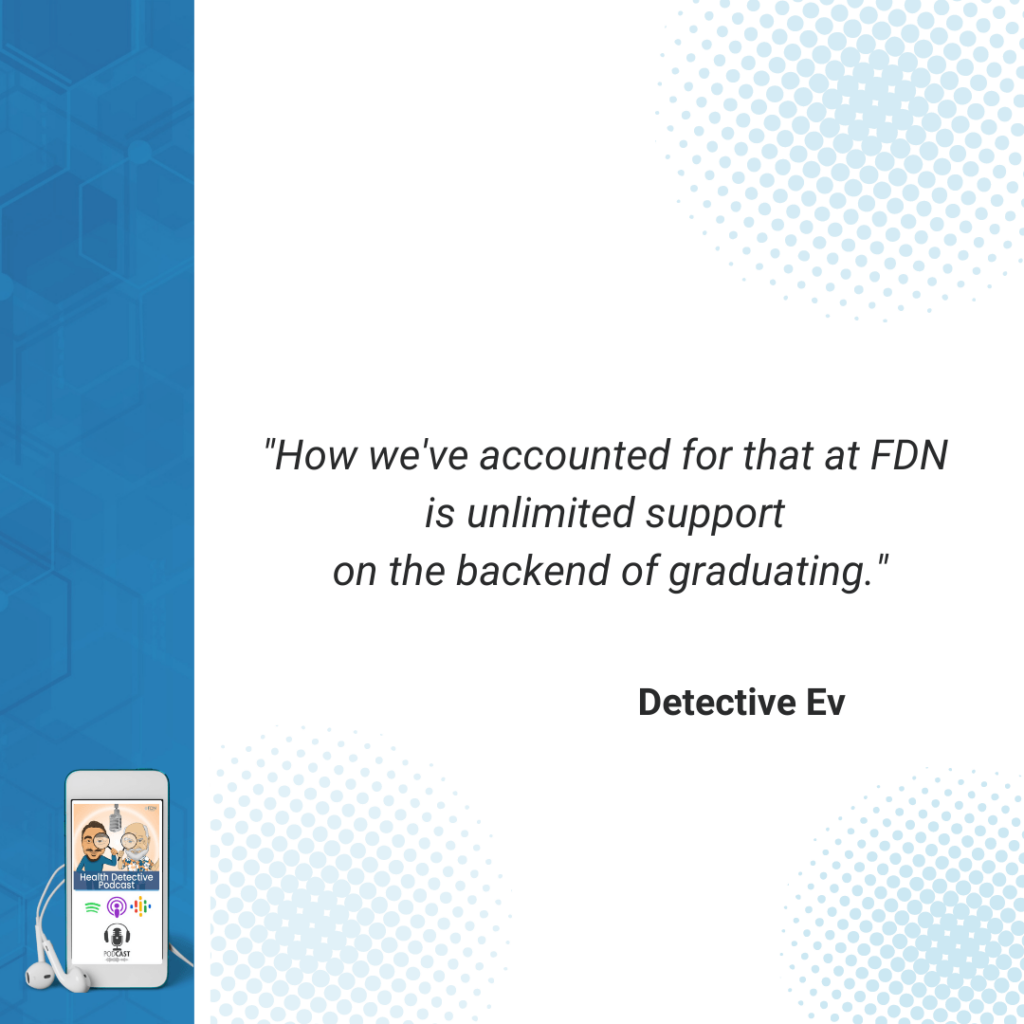
How we’ve accounted for that at FDN is unlimited support on the backend of graduating. When you graduate from FDN, one of the things that you have access to is our professionals’ group. You could choose to join our professionals’ group. In the professionals’ group you have access to not only a bunch of other FDNs who have been doing this longer than you might have even been in the natural health space, some of them have been doing it for 15, 20, even 30 years, but you have access to our clinical advisors. And you can ask questions in there any day of the week.
If you’re wanting to really dive deep, you can actually book a session. They are paid. But you can book a session with one of our clinical advisors and go over lab results directly one-on-one, not in a group setting. Book with your clinical advisor to go over lab results, go over protocol recommendations for specific clients that might have gotten stuck.
In addition, even though we teach you to test for HIDDEN stressors, we give you access to over 60 plus labs and counting after graduating. You say, well, Ev, what am I going to do with all those labs? You’re not going to use all of them. I’ve probably used a fraction, maybe a fourth total of all the labs that we have access to.
HIDDEN Stressors: Go the Distance to Optimal Heath
But the reason that they’re there is because if you get someone to 80%, 90% and they’re like, I know I can get a little farther, what’s next? Then we can say, alright, this person has done all of the lifestyle stuff. They’ve tested for all of the things that we need to test for with every client to make sure that they’re already doing everything that they could have done. Now we can see what’s next.
Maybe they do have some genetic weird thing that we don’t know about. Okay, we can do that. Maybe they have heavy metal toxicity that somehow wasn’t eradicated just doing the things that we would normally do at FDN. Okay, we can test for that. Maybe they’re exposed to mold, and they don’t know that they’re sitting right next to it in their office. Yep. We can test for that.
Maybe we just want to do standard blood work, as funny as that sounds, because sometimes that doesn’t really show that much in the functional medicine space. But maybe we do want to test for that. No problem. We can do that too. So, we have just about everything that someone can want access to afterwards in case you need to finalize some final percentages for your client.
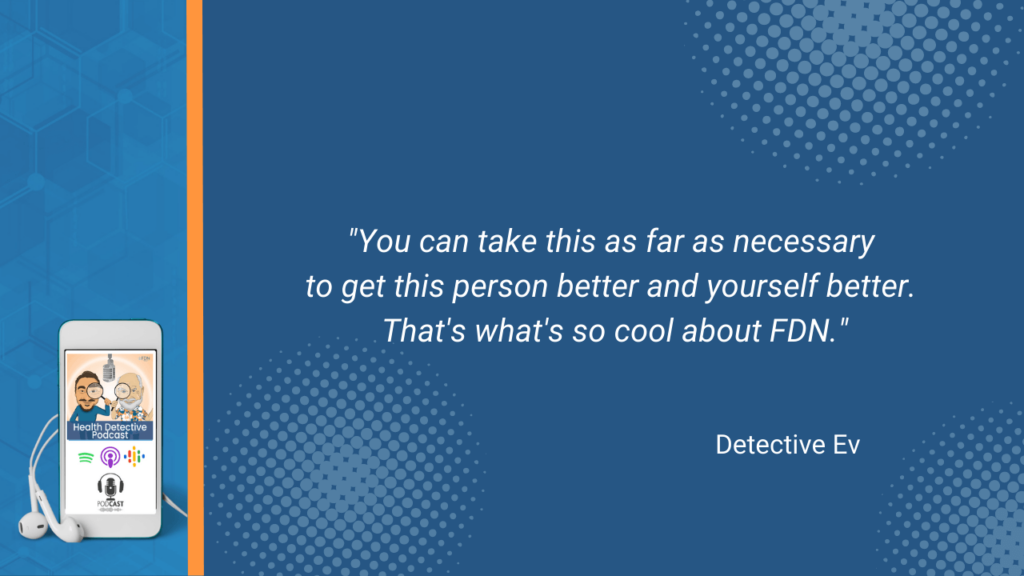
This can go about as far as you want to go. You can take this as far as necessary to get this person better and yourself better. That’s what’s so cool about FDN. We start with HIDDEN because without the foundations, you are wasting a lot of time and a lot of money running the other tests. I’ve been doing this for six years; I can totally attest to what that actually looks like in reality when you’re doing this properly.
HIDDEN Stressors: One of the Best Systems Out There
When you start just running a mold test randomly, or a genetic test randomly, or even heavy metal tests randomly, you might find something. You probably will half the time and you can address that. But you’re not going to have a person that’s 80%, 90% better from just those tests. I mean, maybe one out of a hundred would feel that way. I’ll even be generous and say one out of 10, that’s still 90% that didn’t get that much better.
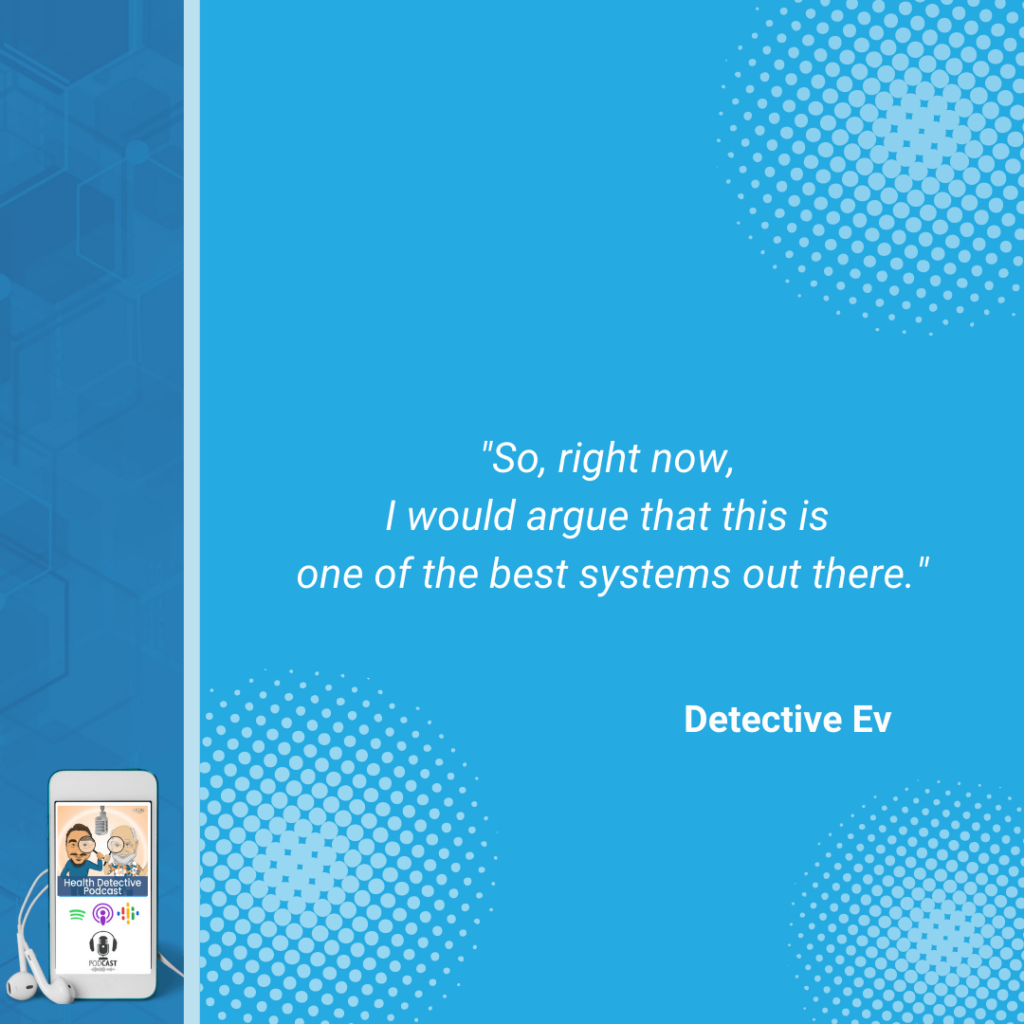
Whereas when you do an FDN program, all you have to do is listen to our podcast, there’s so many episodes on here of people who have gone through the course. You’re not going to find someone who didn’t get at least 70% better just going through FDN. So, right now, I would argue that this is one of the best systems out there.
I don’t know of another system that can say no matter who we do this on, no matter what they have – other than maybe terminally ill cancer, that’s always my disclaimer, unfortunately that’s a different beast- everything other than that, these people feel 70% better when they do the FDN program.
If you find me the single lab test that can do that by itself, okay, fine, let’s go just run that single lab test from now on. I have not seen that. What I have seen is practitioners getting very in love with one test cause it happened to be the thing that worked for them. And now they are basically doing the thing where they’re putting a square peg in a round hole. It doesn’t work that way for everyone; it’s not going to work that way for everyone.
HIDDEN Stressors: A Great Foundation for Anyone
So, we take our biases away from the testing. We take the dogma out of it; we say what works consistently, and this is the best thing that we have right now.
If you have something that does better than 70%, no matter what they have, for every client, all power to you. Let’s get you on the podcast and talk about what you do cause I’d love to hear from you. All you have to do is reach out to us. I’ll host you any day of the week. I’ll do an interview with you. You can shout out the things that you do and your client success stories because you’re doing better than 70% with every single client a hundred percent of the time using a set system, not different things every time. If you can do that, let me know. I’ll happily interview you. Chances are that’s not going to happen.

And so that’s why FDN is a great foundation for anyone on their functional medicine journey. And it, quite frankly, might be all you need on your functional medicine journey. That’s not to say that you shouldn’t keep learning, but man, this has worked pretty dang well for me over the last six years.
I do learn as a hobby, but I haven’t had to learn anything as in depth as FDN ever since doing it. Cause I’m able to get great results for people now. Certainly, got great results for myself. Those seven conditions I mentioned in the beginning of the podcast, I don’t have those anymore. I literally do not have seven out of seven of the diagnosed conditions that I had at 18, some of which I was told were incurable, and yet I don’t have the symptoms of them anymore.
HIDDEN Stressors: Summing it Up
I’m just in that long-term remission, as they say. Even though, also interestingly, is the same things that would’ve triggered the symptoms for me before, no longer trigger symptoms. So, is that remission or do I just not have the condition? I don’t know. I’m just the functional health guy.
Okay. I took a few side tangents today, I would say. But I hope this all makes sense. And in summary, let’s connect. So, what we’ve done so far is we’ve talked about metabolic chaos. That’s the only unofficial diagnosis that we give out of FDN.
And metabolic chaos can be defined in a few different ways. But the way that I personally like to think about it is it’s what happens when there are so many things going wrong, there’s so many quote/unquote “root causes” that you don’t even know what the root cause is. And quite frankly, it doesn’t matter because everything is having an effect on itself now. Maybe blood sugar dysregulation led to diabetes, and now you have a thyroid condition, but now the thyroid condition’s causing stress on the rest of the body.
It’s a cascade. There’s everything interacting with each other. That’s metabolic chaos. So, there’s no point in just treating the diabetes or just treating the thyroid condition. You need to address all of it. Address metabolic chaos, and then it’s going to get better.
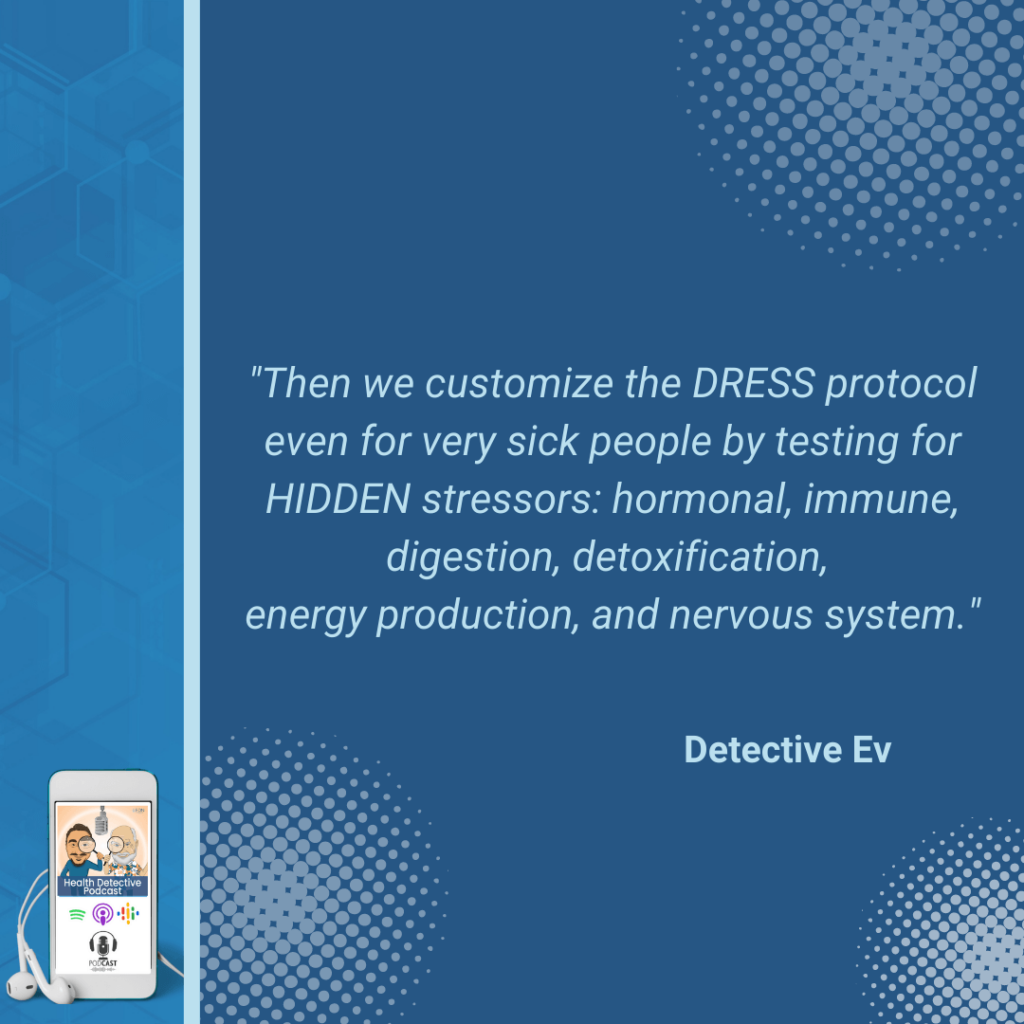
And then how do we do that? Well, we talked about DRESS. That’s the lifestyle side of FDN: diet, rest, exercise, stress reduction and supplementation. And then we customize the DRESS protocol even for very sick people by testing for HIDDEN stressors: hormonal, immune, digestion, detoxification, energy production, and nervous system. And that works pretty dang well.
Conclusion
I don’t know anything that works better at the time of recording this. But if we need to course correct a little bit, we have access to everything we could possibly need to get this person, this client, as far as they want to go health-wise, or you as far as you want to go health-wise, if you’re on your own health journey still and considering becoming a practitioner.
So that’s that. The next thing we will talk about is breaking down what a day in the life of a course trainee might look like. And I might combine with that episode what a day in the life of an FDN graduate might look like, depending on how long it takes to break down the trainee side. So, we will be continuing our series for a couple more episodes.
I hope you guys are enjoying this so far. And please make sure to listen to the other two if you kept listening to this one without checking those out. Have a great day, and I’m looking forward to talking to you guys again soon.

You can always visit us at functionaldiagnosticnutrition.com, on YouTube @FDNtraining, or on Instagram @fdntraining.
For more informational and functional health-oriented podcasts like this one, go to functionaldiagnosticnutrition.com/health-detective-podcast/.
To learn more about us, go to functionaldiagnosticnutrition.com/about-fdn-functional-testing/.

